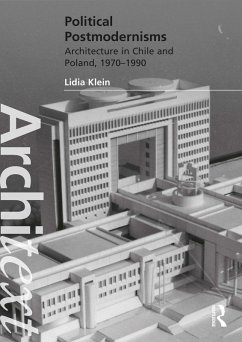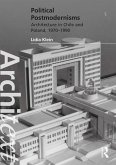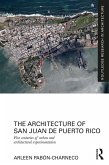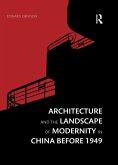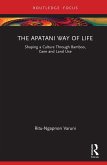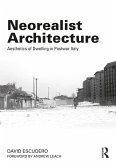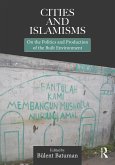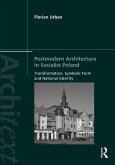37,95 €
37,95 €
inkl. MwSt.
Sofort per Download lieferbar

19 °P sammeln
37,95 €
Als Download kaufen

37,95 €
inkl. MwSt.
Sofort per Download lieferbar

19 °P sammeln
Jetzt verschenken
Alle Infos zum eBook verschenken
37,95 €
inkl. MwSt.
Sofort per Download lieferbar
Alle Infos zum eBook verschenken

19 °P sammeln
- Format: PDF
- Merkliste
- Auf die Merkliste
- Bewerten Bewerten
- Teilen
- Produkt teilen
- Produkterinnerung
- Produkterinnerung

Bitte loggen Sie sich zunächst in Ihr Kundenkonto ein oder registrieren Sie sich bei
bücher.de, um das eBook-Abo tolino select nutzen zu können.
Hier können Sie sich einloggen
Hier können Sie sich einloggen
Sie sind bereits eingeloggt. Klicken Sie auf 2. tolino select Abo, um fortzufahren.

Bitte loggen Sie sich zunächst in Ihr Kundenkonto ein oder registrieren Sie sich bei bücher.de, um das eBook-Abo tolino select nutzen zu können.
Political Postmodernisms shows how postmodern architecture in the unlikely settings of Chile during the neoliberal dictatorship of Augusto Pinochet and Poland during the late socialist Polish People's Republic undermine an established narrative of architecture theory and history.
- Geräte: PC
- ohne Kopierschutz
- eBook Hilfe
- Größe: 34.43MB
Andere Kunden interessierten sich auch für
![Political Postmodernisms (eBook, ePUB) Political Postmodernisms (eBook, ePUB)]() Lidia KleinPolitical Postmodernisms (eBook, ePUB)37,95 €
Lidia KleinPolitical Postmodernisms (eBook, ePUB)37,95 €![The Architecture of San Juan de Puerto Rico (eBook, PDF) The Architecture of San Juan de Puerto Rico (eBook, PDF)]() Arleen Pabon-CharnecoThe Architecture of San Juan de Puerto Rico (eBook, PDF)45,95 €
Arleen Pabon-CharnecoThe Architecture of San Juan de Puerto Rico (eBook, PDF)45,95 €![Architecture and the Landscape of Modernity in China before 1949 (eBook, PDF) Architecture and the Landscape of Modernity in China before 1949 (eBook, PDF)]() Edward DenisonArchitecture and the Landscape of Modernity in China before 1949 (eBook, PDF)45,95 €
Edward DenisonArchitecture and the Landscape of Modernity in China before 1949 (eBook, PDF)45,95 €![The Apatani Way of Life (eBook, PDF) The Apatani Way of Life (eBook, PDF)]() Ritu VaruniThe Apatani Way of Life (eBook, PDF)20,95 €
Ritu VaruniThe Apatani Way of Life (eBook, PDF)20,95 €![Neorealist Architecture (eBook, PDF) Neorealist Architecture (eBook, PDF)]() David EscuderoNeorealist Architecture (eBook, PDF)37,95 €
David EscuderoNeorealist Architecture (eBook, PDF)37,95 €![Cities and Islamisms (eBook, PDF) Cities and Islamisms (eBook, PDF)]() Cities and Islamisms (eBook, PDF)38,95 €
Cities and Islamisms (eBook, PDF)38,95 €![Postmodern Architecture in Socialist Poland (eBook, PDF) Postmodern Architecture in Socialist Poland (eBook, PDF)]() Florian UrbanPostmodern Architecture in Socialist Poland (eBook, PDF)38,95 €
Florian UrbanPostmodern Architecture in Socialist Poland (eBook, PDF)38,95 €-
-
-
Political Postmodernisms shows how postmodern architecture in the unlikely settings of Chile during the neoliberal dictatorship of Augusto Pinochet and Poland during the late socialist Polish People's Republic undermine an established narrative of architecture theory and history.
Dieser Download kann aus rechtlichen Gründen nur mit Rechnungsadresse in A, B, BG, CY, CZ, D, DK, EW, E, FIN, F, GR, HR, H, IRL, I, LT, L, LR, M, NL, PL, P, R, S, SLO, SK ausgeliefert werden.
Produktdetails
- Produktdetails
- Verlag: Taylor & Francis eBooks
- Seitenzahl: 162
- Erscheinungstermin: 31. März 2023
- Englisch
- ISBN-13: 9781000860191
- Artikelnr.: 67619124
- Verlag: Taylor & Francis eBooks
- Seitenzahl: 162
- Erscheinungstermin: 31. März 2023
- Englisch
- ISBN-13: 9781000860191
- Artikelnr.: 67619124
- Herstellerkennzeichnung Die Herstellerinformationen sind derzeit nicht verfügbar.
Lidia Klein is an Assistant Professor in Architectural History at the School of Architecture, University of North Carolina - Charlotte, specializing in global contemporary architecture. She earned her first Ph.D. from the University of Warsaw in Poland in 2013 and her second from Duke University in 2018. Prior to joining UNCC in 2018, Klein was awarded a Fulbright Junior Advanced Research Grant to the AAHVS Department at Duke (2010-2011) and was a Visiting Assistant in Research at the Yale School of Architecture (2016). Her book projects include the single-author study Living Architectures: Biological Analogies in Architecture of the End of the 20th Century (Warsaw: Fundacja Kultury Miejsca, 2014, in Polish) and the edited books Transformation: Polish Art, Design and Architecture after 1989 (Warsaw: Fundacja Kultury Miejsca, 2017, in Polish) and Polish Postmodernism: Architecture and Urbanism (Warsaw: 40000 Malarzy, 2013, in Polish).
Acknowledgements Introduction The "Rise" and "Fall" of Postmodern Architecture and Urbanism The Apolitical Legacy as Culminating in Postmodern Revivalism Chilean and Polish Postmodernism Recent Scholarship on Postmodernism Outline 1. Postmodernism and the State in Pinochet's Chile 1.1. From Eduardo Frei Montalva and Salvador Allende to Augusto Pinochet: Transformations in Urban Space 1.2. Postmodern Architecture as Propaganda: Plaza de la Constitución and Congreso de Chile 2. Postmodernism Against the State Under Pinochet's Dictatorship 2.1. The Origins of CEDLA and Its Emergence in Santiago 2.2. CEDLA's Project for Santiago Poniente 2.3. Social Housing 2.4. Dissent and Compliance 2.5. Chile's Distinctive Postmodernism 3. Socialist Postmodernism in the Polish People's Republic 3.1. Postmodern Architecture and Propaganda in the Polish People's Republic 3.2. Architektura 3.3. Na Skarpie Estate (Centrum E) 4. Postmodernism and Dissent in Socialist Poland 4.1. Oppositional Postmodernism: Czes
aw Bielecki and the DiM Group 4.2 Reforming the System from Within: Marek Budzy
ski and the Legacy of Socialist Realism 4.3. North Ursynów: City, Church, and Continuity 4.4. Poland's Distinctive Postmodernism Conclusion: Postmodernism as a Political Form Appendix: Interviews Humberto Eliash, August 23, 2016 Pedro Murtinho, August 30, 2016 Pedro Murtinho, September 1, 2016 Pilar Garcia, September 1, 2016 Cristián Boza, September 5, 2016 Fernando Pérez Oyarzún, September 6, 2016 Humberto Eliash, September 7, 2016 Fernando Pérez Oyarzún, September 12, 2016 Marta Le
niakowska, June 5, 2017 Czes
aw Bielecki, June 9, 2017 Romuald Loegler, July 1, 2017 Wojciech Szymborski & Ludwika Borawska Szymborska, July 26, 2021 Bibliography
aw Bielecki and the DiM Group 4.2 Reforming the System from Within: Marek Budzy
ski and the Legacy of Socialist Realism 4.3. North Ursynów: City, Church, and Continuity 4.4. Poland's Distinctive Postmodernism Conclusion: Postmodernism as a Political Form Appendix: Interviews Humberto Eliash, August 23, 2016 Pedro Murtinho, August 30, 2016 Pedro Murtinho, September 1, 2016 Pilar Garcia, September 1, 2016 Cristián Boza, September 5, 2016 Fernando Pérez Oyarzún, September 6, 2016 Humberto Eliash, September 7, 2016 Fernando Pérez Oyarzún, September 12, 2016 Marta Le
niakowska, June 5, 2017 Czes
aw Bielecki, June 9, 2017 Romuald Loegler, July 1, 2017 Wojciech Szymborski & Ludwika Borawska Szymborska, July 26, 2021 Bibliography
Acknowledgements Introduction The "Rise" and "Fall" of Postmodern Architecture and Urbanism The Apolitical Legacy as Culminating in Postmodern Revivalism Chilean and Polish Postmodernism Recent Scholarship on Postmodernism Outline 1. Postmodernism and the State in Pinochet's Chile 1.1. From Eduardo Frei Montalva and Salvador Allende to Augusto Pinochet: Transformations in Urban Space 1.2. Postmodern Architecture as Propaganda: Plaza de la Constitución and Congreso de Chile 2. Postmodernism Against the State Under Pinochet's Dictatorship 2.1. The Origins of CEDLA and Its Emergence in Santiago 2.2. CEDLA's Project for Santiago Poniente 2.3. Social Housing 2.4. Dissent and Compliance 2.5. Chile's Distinctive Postmodernism 3. Socialist Postmodernism in the Polish People's Republic 3.1. Postmodern Architecture and Propaganda in the Polish People's Republic 3.2. Architektura 3.3. Na Skarpie Estate (Centrum E) 4. Postmodernism and Dissent in Socialist Poland 4.1. Oppositional Postmodernism: Czes
aw Bielecki and the DiM Group 4.2 Reforming the System from Within: Marek Budzy
ski and the Legacy of Socialist Realism 4.3. North Ursynów: City, Church, and Continuity 4.4. Poland's Distinctive Postmodernism Conclusion: Postmodernism as a Political Form Appendix: Interviews Humberto Eliash, August 23, 2016 Pedro Murtinho, August 30, 2016 Pedro Murtinho, September 1, 2016 Pilar Garcia, September 1, 2016 Cristián Boza, September 5, 2016 Fernando Pérez Oyarzún, September 6, 2016 Humberto Eliash, September 7, 2016 Fernando Pérez Oyarzún, September 12, 2016 Marta Le
niakowska, June 5, 2017 Czes
aw Bielecki, June 9, 2017 Romuald Loegler, July 1, 2017 Wojciech Szymborski & Ludwika Borawska Szymborska, July 26, 2021 Bibliography
aw Bielecki and the DiM Group 4.2 Reforming the System from Within: Marek Budzy
ski and the Legacy of Socialist Realism 4.3. North Ursynów: City, Church, and Continuity 4.4. Poland's Distinctive Postmodernism Conclusion: Postmodernism as a Political Form Appendix: Interviews Humberto Eliash, August 23, 2016 Pedro Murtinho, August 30, 2016 Pedro Murtinho, September 1, 2016 Pilar Garcia, September 1, 2016 Cristián Boza, September 5, 2016 Fernando Pérez Oyarzún, September 6, 2016 Humberto Eliash, September 7, 2016 Fernando Pérez Oyarzún, September 12, 2016 Marta Le
niakowska, June 5, 2017 Czes
aw Bielecki, June 9, 2017 Romuald Loegler, July 1, 2017 Wojciech Szymborski & Ludwika Borawska Szymborska, July 26, 2021 Bibliography
